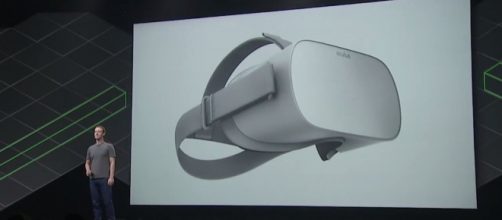It can be discussed at length whether Oculus Vr – the virtual reality arm of Facebook – allowed Samsung to premiere their VR headset first, or if they simply could not get their own latest device out to the public soon enough. After all, the Korean electronics giant seemed to be issuing a challenge with their new Odyssey gear at Oculus VR, whom they had collaborated with on a previous headset model back in 2014. The Facebook subsidiary, on the other hand, has been making noise about their new VR gear since July. But none of that really matters now.
Only nine days after the debut of the Samsung Odyssey, Facebook and Oculus VR also unveiled their new Oculus GO VR headset.
No smartphone or PC needed
The big reveal was done at the Oculus Connect 4 event in San Jose this Wednesday, October 11. Facebook’s visionary CEO Mark Zuckerberg made the introduction of the Oculus Go himself, describing it as the most accessible VR headset yet designed. The Go VR gear is Zuckerberg’s means for Facebook to encourage at least one billion people all over the world to get into virtual reality with Oculus technology. And the Oculus Go hopes to accomplish that with its being a standalone device.
Past consumer-marketed VR headsets usually required a smartphone inserted into the visor (as the viewing medium like the Google Daydream View), or a connection to a computer with which to provide the visuals with.
The previous Facebook VR device, Oculus Rift, required such a computer connection (and its viewing monitor is even a modified display screen from a Samsung Galaxy Note 3. All these are not essential with the Oculus Go meaning that free from the added requirement of a high-end PC or a smartphone; the headset can be used and enjoyed by itself, thanks to its “fast-switch” WQHD LCD screen and integrated headphones with spatial audio effect.
Making VR mainstream
While virtual reality headsets have been around for years now, the consumer demand for them has been anywhere from so-so to “does not know they exist.” The reasons for that are the rather prohibitive prices of some headsets like the old Oculus Rift, and the lack of major software development in their ecosystem.
Facebook’s Oculus Go is slated to cost only $199, a far cry from the current Rift bundle of $399.
By making a VR headset with as “low-end” a price as can be while still offering quality virtual muscle, Mark Zuckerberg hopes to help in making VR tech more mainstream than ever before. The original Oculus VR startup was acquired by Facebook in 2014 for $2 billion. The Oculus Go headset is expected to start shipping early next year.


